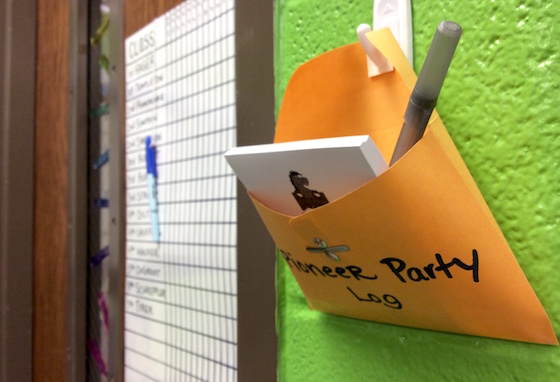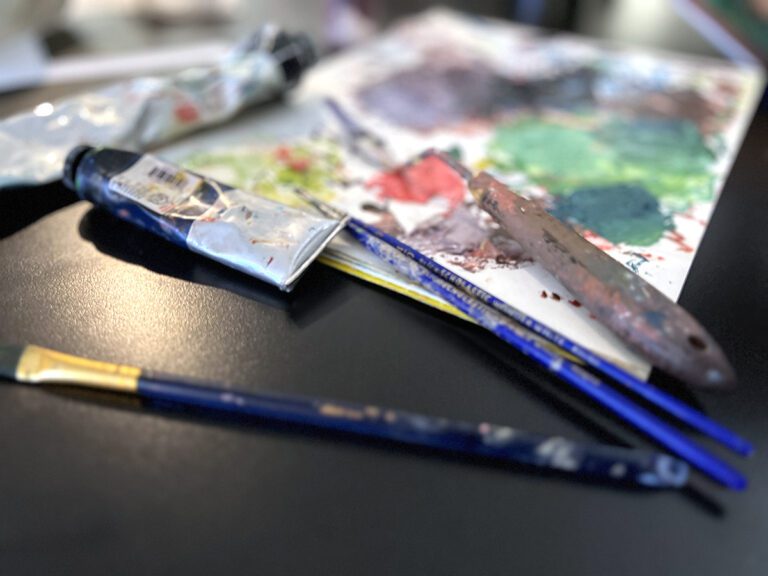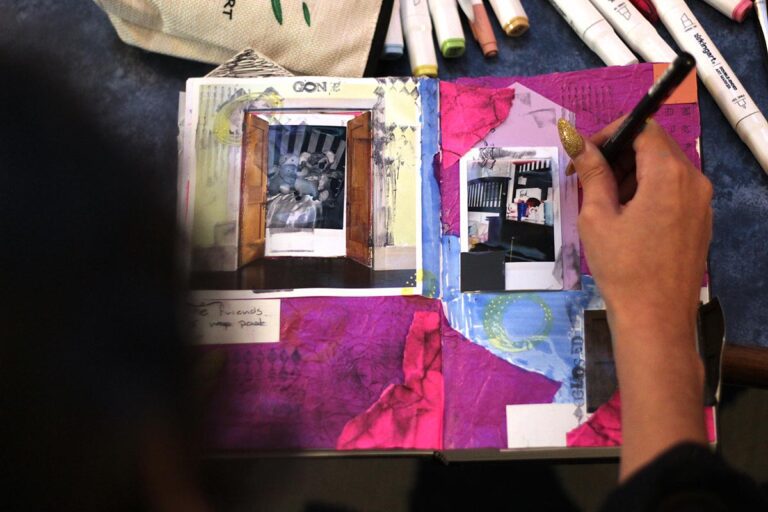Can you believe that many of us graduated without ever having to take a classroom management course?
Maybe you’ve found yourself in a spot where you are completely winging it. The good news is that you probably aren’t alone. The even better news is that there might be a classroom management solution for you to try out this year.
Two years ago, I was really struggling with consistency in my art room. My management plan was based on the latest and greatest idea I had found on Pinterest. Nothing really seemed to be working for me. It wasn’t until I was talking about classroom management with some other art teachers that I came across the idea of a point system. Last year, I decided to step out with my fellow specialists and give this system a shot. After a year of using the point system under my belt, I have been highly encouraged with the results I’ve seen. If you are interested in revamping your classroom management system then first read how the point system works and follow that up with some of the pointers below.
How to Set-up a Point System
1. Choose Expectations
The first thing you need to decide on is which expectations are the most important for your classroom. For example, I really want clean-up and line-up to be done in an organized fashion. It was more important to me than everyone being silent during clean-up (choose your battles wisely!). The number of expectations you end up with will decide how many points the students can earn.

2. Keep it Simple and Concise
Don’t overwhelm your students or yourself with an unrealistic number of expectations. It would be a headache to keep track of too many points. My students can only earn four points each class.
3. Make a Chart
Consider making a chart for you to log the number of points each class earns every week. I drew out a grid and laminated it. The class names and points are written with a vis-à-vis marker so they can be erased when necessary.
4. Make a Notepad
After typing out a template on Word, make several copies for yourself. My principal had my template made into a notepad for me, but even just having hard copies on hand would work.

5. Keep it Convenient
Place your chart and notepad nearby your art room door. You don’t want to have to search for these items when it is the end of class. After the class is lined up, I can simply pull out my notepad to review the expectations with my students. Once we have determined our points for the day I can easily write them on the chart which is taped to my door.

6. Set a Goal
Have the students work towards a goal. My students know that if we earn 50 points in a semester, then we get a celebration in the art room. This could look like a fun trivia/review game done on Plickers or even a day when they get to explore the medium of their choice. If it is something they want, then they will work hard to get the points every class.
7. Be Consistent
The title says it all. If you aren’t consistent with reviewing the expectation questions at the end of class, or you keep giving grace when you should be holding the students accountable, then the point system won’t work for you. Consistency lets the students know that you are in charge. It doesn’t make you a mean teacher, it makes you a better teacher.
Don’t be discouraged if your other specialist friends don’t get on board with the point system. It can still work for you even if you are the only specialist following it. In the last year, I have seen my classes transform from the use of the point system. It has also changed me because I now have such high expectations for what classroom management can really look like. If you’re drowning in an unruly class or perhaps just wanting to find a management system that creates more consistency, then give the point system a chance. Also, make sure to check out AOE’s online course Managing the Art Room for an in-depth look into setting up a management plan that works for you.
What does your management plan look like?
Have you ever used a point system? Did it work for you?
Magazine articles and podcasts are opinions of professional education contributors and do not necessarily represent the position of the Art of Education University (AOEU) or its academic offerings. Contributors use terms in the way they are most often talked about in the scope of their educational experiences.




